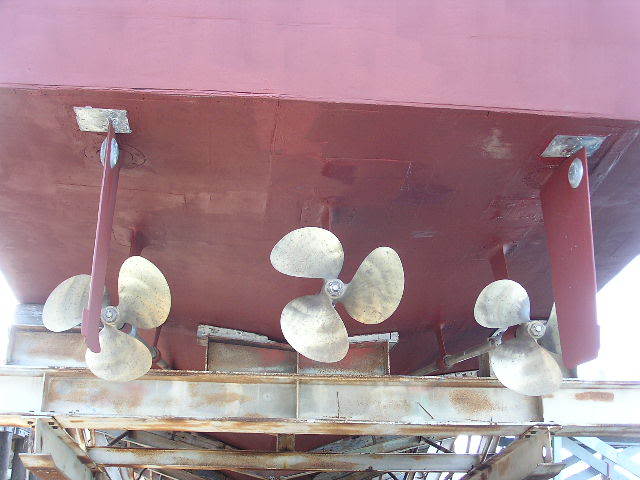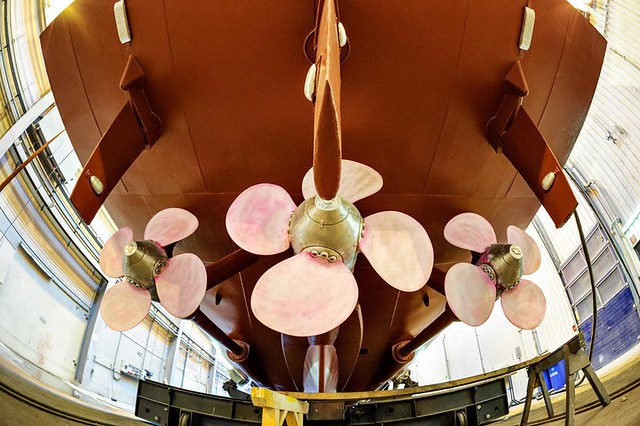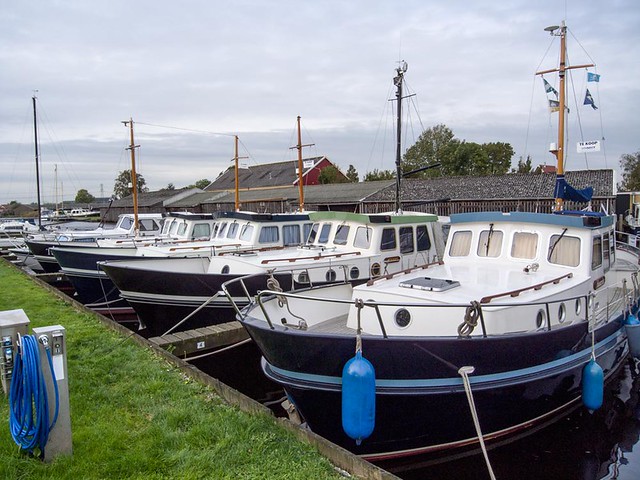How were the three engines geared? I guess I am assuming only two props/shafts. Were there three shafts? If only 2, how do you pslit the power of the third engine?
Each engine drove its own propeller. So three props, and in the case of the Elco boat, three rudders. In the case of the Higgins boat, two rudders (but still three props).
There were two types of PTs used by the American Navy in WWII. The more numerous type was designed and built by Elco in Bayonne, New Jersey. The other was built by Higgins near New Orleans.
(Higgins also built a vessel known to the Navy as the LCVP (Landing Craft Vehicle Personnel) which some war historians claim was responsible for the Allies winning in both theatres. Like the PTs, the LCVP was made of wood except for the bow ramp which was steel.)
There was a handful (one squadron) of PTs built by Huckins, but these boats, while beautifully made, were deemed by the Navy to be unfit for combat missions and so were used only for training and harbor patrol duties.
The Elco and Higgins boats were quite different from each other outside of their mission and the number and type of engines that powered them. I have interviewed hundreds of PT vets in the course of my research, and while the Elco guys said their boat was the best and the Higgins guys said their boat was the best, once you got a few beers into them, the general consensus was that the Elco boat was the better boat to crew on. A good part of the reason for this was the difference in the configuration of the engines.
The 78' Higgins boat (the one my wife and I were invited to ride on, although my book takes place on an Elco) retained the same engine configuration for the duration of the war. The three Packard 4M-2500 engines were arranged side by side in a fairly spacious (long) engine room. All three engines faced forward and had direct drive to the three props. The center engine was staggered slightly from the wing engines to provide better access to each engine.
As everyone on this forum knows, every boat is a compromise and the PTs were no exceptions. The motor macs on the Higgins boats had pretty nice engine rooms to work in (at least I thought it was), but that meant the crew accommodations up forward were pretty cramped.
The engines in the 80' Elco boats were mounted differently. The center engine was mounted facing forward with a direct drive to its prop. The two wing engines were mounted backwards and drove their shafts and prop through V-drives. This made it possible to have a shorter engine room. Which in turn made it possible to have more spacious and user-friendly crew accommodations, although as mentioned in the previous post, the balance of the boat was a bigger consideration than the accomodations. So perhaps it was more a matter of the Elco crews lucking out. But I've always thought it was a very clever way to get a lot of power into a fairly small room and it's the inspiration behind a project we are currently undertaking.
As the war progressed, the PT mission gradually changed. By the end of 1943 its role as a torpedo boat was pretty much over even though they usually continued to carry a pair of the smaller aerial torpedoes that replaced the huge, heavy, and totally unreliable WWI era torpedoes the PTs and our subs started the war with. What the PTs turned into were gunboats, and by late 1944 the Elco PT was, pound for pound, the heaviest armed ship in the Navy.
Problem was, all these guns and rockets and mortars were heavy. The Packard 4M-2500 started life rated at at about 1200 hp. By the end of the war this had been boosted to about 1500 hp. But in the Elco boat, some of that power was being eaten up by the V-drives on the two wing engines. So at some point in 1945, in an effort to put the maximum power possible to the props, Elco reconfigured its engine room and mounted all three engines facing forward with direct drives to the props. The wing engines were mounted with their carburetor/supercharger ends right up close to the forward bulkhead while the center engine sat slightly aft.
Since the dayroom, officers quarters and galley, and crew compartment were unchanged, I can only assume that if Elco needed a bit more length in the engine room to do this they stole it from the lazarette. But I don't know that for sure.
The change in the Elco engine arrangement entered production right at the end of the war, and very few boats of this type were made. The restored Elco that's on display at Battleship Cove in Fall River, Mass. is one of these late boats; in fact I believe it was delivered just after the war ended.
The photo is from the Fall River boat and shows the starboard engine. In the majority of Elco boats, it would have faced the other way and been mounted farther aft with the V-drive forward.
In the V-drive configuration, the motor mac sat on a metal tractor seat bolted to the forward (bow) end of the inboard rocker box of the starboard engine. The long shift levers from all three transmissions were bent so that they all came up right next to him. The motor mac shifted the transmissions in response to an indicator panel in front of him. The skipper on the bridge operated the throttles, which also operated the shift indicators.
There were also sound powered phones, but the motor mac vets I talked to said you couldn't hear though them when the engines were running. Every one of them told me that after a mission--- the boats would go out at sunset and get back just before sunrise--- it took about half a day to get their hearing back. Every one of them I met said they'd been wearing hearing aids for decades. No OSHA back then......
Way more than you wanted to know, I'm sure, but I've got a whole office and two computers stuffed full of PT info and I've crawled around for hours on both types of boats, so there it is.
















